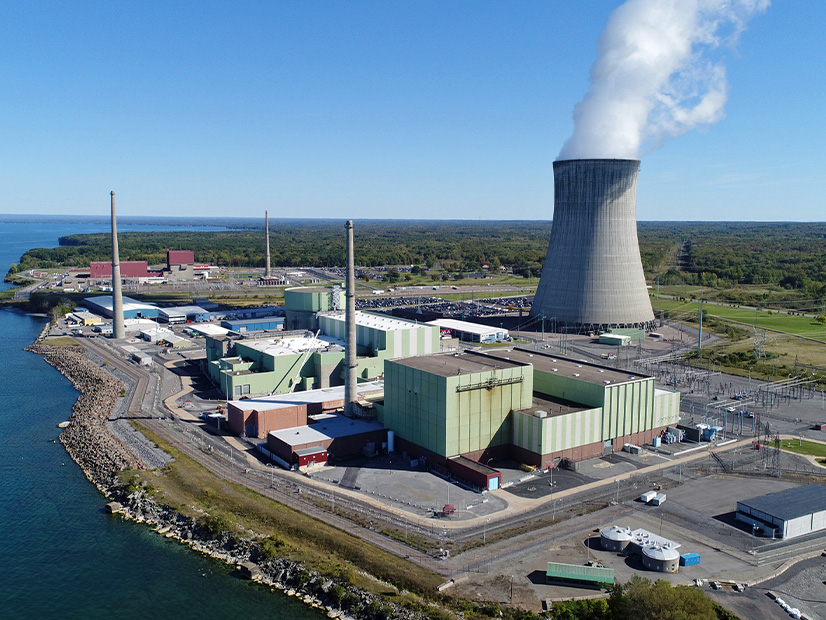
A central New York nuclear power plant is the first in the nation to generate its own hydrogen, Constellation Energy Group (NASDAQ:CEG) and the U.S. Department of Energy announced Tuesday.
The agency and company shared costs on the project at the Nine Mile Point Nuclear Plant, which is one of four DOE hydrogen demonstration projects underway at reactors.
The hydrogen generation system went online in February, several months after its projected late-2022 startup. It produces 560 kilograms of hydrogen per day with an hourly 1.25-MW draw on the 1,907-MW output of Nine Mile’s two reactors.
Hydrogen is used on site for cooling, and previously was trucked in, but Constellation said the output of the new system exceeds the needs at Nine Mile.
Nine Mile is simultaneously working with the New York State Energy Research and Development Authority on a demonstration project that will use hydrogen fuel cell technology to provide long-duration energy storage and is targeted to be operational in 2025.
Hydrogen, which burns without producing greenhouse gas emissions, is potentially a key tool in fighting climate change. It could serve as a form of energy storage and is viewed as an alternate power source for industries and applications that otherwise would be hard to decarbonize.
But the cost of production currently is a barrier to wider use. DOE made reducing that cost by 80%, to $1/kilogram, the central goal of the first of its Energy Earthshots in 2021.
Interest is keen in green hydrogen — derived from renewable energy sources — because generating greenhouse emissions to generate hydrogen limits the net benefit.
So-called pink hydrogen is produced with emissions-free nuclear power and, in some processes, with the excess heat generated by nuclear fission.
Reactors at Nine Mile, Davis-Besse in Ohio and Palo Verde in Arizona are testing low-temperature electrolysis systems. The fourth demonstration project, at Prairie Island Nuclear Generating Plant in Minnesota, is testing a high-temperature electrolysis process that is regarded as more efficient.
DOE provided a $5.8 million grant to the Nine Mile project, which uses a proton exchange membrane made by Nel Hydrogen.
Constellation said the demonstration project could pave the way for large-scale deployments at its other clean-energy facilities.
Constellation has told investors it plans $900 million in capital investments to develop commercial hydrogen production, which it hopes to begin in 2026. It projects a 250-MW hydrogen facility could produce about 33,450 metric tons of hydrogen, more than 90% of which it expects to sell via long-term off-take agreements.
“Hydrogen will be an indispensable tool in solving the climate crisis, and Nine Mile Point is going to show the world that nuclear power is the most efficient and cost-effective way to make it from a carbon-free resource,” Constellation CEO Joe Dominguez said in a news release. “In partnership with DOE and others, we see this technology creating a pathway to decarbonizing industries that remain heavily reliant on fossil fuels, while creating clean-energy jobs and strengthening domestic energy security.”
“This accomplishment tangibly demonstrates that our nation’s existing reactor fleet can produce clean hydrogen today,” Kathryn Huff, assistant DOE secretary for nuclear energy, said in a news release. “DOE is proud to support cost-shared projects like this to deliver affordable clean hydrogen. The investments we’re starting to make now through the Bipartisan Infrastructure Law and Inflation Reduction Act will even further expand the hydrogen market to create new economic and environmental benefits for nuclear energy.”



